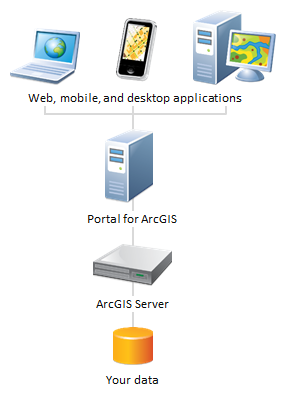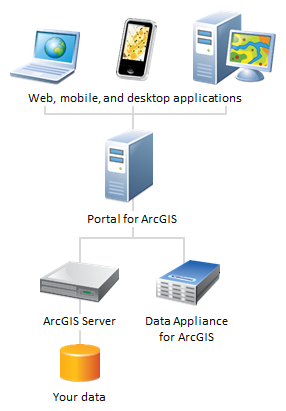Portal for ArcGIS has a central role in organizing and sharing information in your ArcGIS system. The portal provides a user-friendly, searchable repository for your maps and apps. It also helps you create and share new maps and apps.
Some of the information in these maps and apps originates from a database in your organization. The GIS content in this database is shared with other devices using web services hosted by ArcGIS Server. The portal helps map and app creators find and use these web services and provides a window into your GIS content without requiring GIS software training.

Some organizations publish a full suite of web services that can be used to create a fully in-house app using proprietary data. However, in many cases, you may want to supplement your own services with detailed basemaps, place finders, address finders, and other GIS web services from ArcGIS Online. In this scenario, you combine your own ArcGIS Server services with services that are hosted and continuously updated in the Esri cloud.

If your maps and apps don’t have internet access, you can use ArcGIS Data Appliance to supply the same basemaps, address finders, and other web services that you typically find on ArcGIS Online. This type of deployment can be hosted completely behind your organization’s firewall.

If you want to support a combination of internal and external users, you can deploy two portals: one behind your firewall and one that is exposed to the web. This works well when you want full control over the data location and updates, or if your data is not allowed to be hosted offsite. An alternative is to use an organizational subscription to ArcGIS Online for your external-facing apps and services.